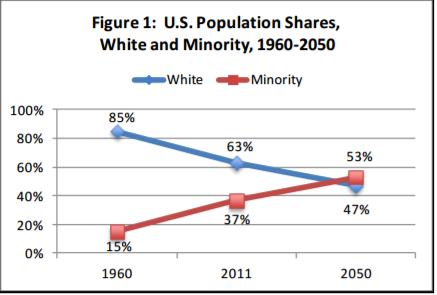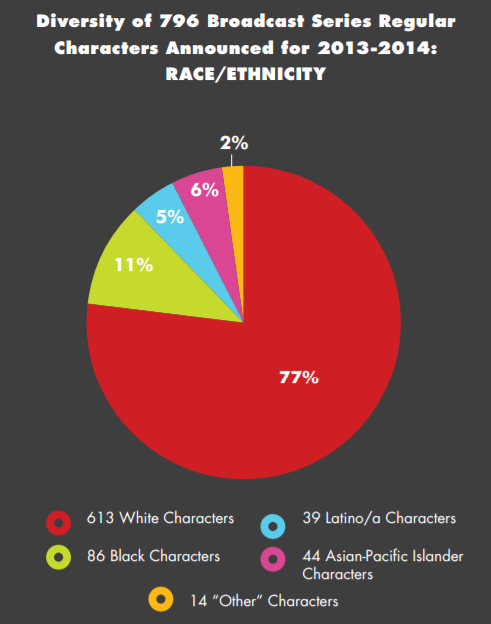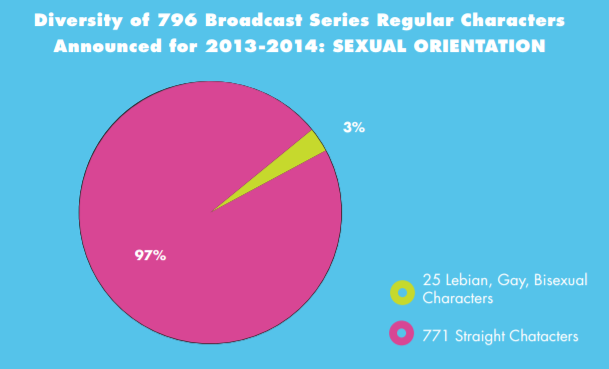Introduction
Even though the Internet has become the dominant media in the contemporary world, television and its products remain extremely popular among the audiences of all kinds. A number of massive social trends have taken place over the past couple of decades. One of the most important trends concerns the representation of the social diversity of the American population in the media, as well as the growing scope of themes and issues discussed on TV.
This research provides a mixed analysis of both of these aspects, covering the products released within the last twenty years. In particular, ten of the most popular TV series launched prior to the year 2005 will be compared to ten TV shows launched after 2005 in terms of character demographics (among the lead characters primarily) and themes. To be more precise, the former aspect will be researched using the quantitative approach to determine the number of representatives of different groups of the population featured as main characters; and the latter aspect will be studied using qualitative methods.
Literature Review
As it was pointed out by The Guardian, when it comes to the representation of diversity, Hollywood casting choices are not very close to portraying the actual ethnic composition of the society in the United States (Julious, 2015). Many researchers have explored the dynamics of diversity representation on television and in movies and concluded that the film industry is much further from depicting reality than television (Eggans, 2016). In fact, the researchers refer to the phenomenon of lack of diversity presentation on TV as “media invisibility” of multiple groups of the population.
Studies have been conducted in order to assess the level of diversity presentation in films, reality shows, TV, and cable series; they revealed that Hollywood remains dominated by straight white men not only as actors by also as film directors and TV show creators. In particular, the recent Hollywood Diversity Reports carried out by Ralph J. Bunche Center for African American Studies at UCLA cover a wide range of aspects and spheres in order to investigate how different groups of the population are shown on TV and in movies. These studies are conducted because the media have the capacity to produce a very powerful effect on the viewers and influence the way they identify in relation to the other members of the society and groups (Bunche, 2014).
In that way, television shows, news, and films can be recognized as the stories told by a culture or a state about itself; accordingly, the invisibility of certain communities or their misrepresentation can significantly contribute to the further marginalization of these groups and individuals and to the development of harmful and dangerous stereotypes (Bunche, 2014).
In order to demonstrate the level of minority underrepresentation on TV, Hollywood Diversity Report by Bunche (2015), informs that in 2011, the white and minority population shares in the United States comprised 63% and 37% respectively whereas the shares of lead actors and actresses in films and on TV showed that white individuals had over 80% of all roles between 2011 and 2013 while minority representatives had only 10 to 15% of roles.

In addition, the research conducted by GLAAD (2013) revealed that in the sample of 796 broadcast TV series aired on NBC, CBS, the CW, FOX, and ABC, the ethnicity shares were the following: white characters comprised 77%, Black characters – 11%, Asian and Pacific Islander characters – 6%, Latino and Latina characters – 5%, the remaining 2% were comprised of multiracial characters or those of other ethnicities.

Moreover, in the same sample of TV series, the LGBT characters stood for 3%; of them, 97% of characters were white.

Regardless of the existing underrepresentation of the minority groups that are rather common in the American society, in reality, the prevalence of the diverse characters in the TV series made in the United States is evaluated as improving and closing to the real statistics (GLAAD, 2013; Bunche, 2015).
Research Questions
Based on the latter statement, the purpose of this research is to compare the prevalence of the minority characters in the TV series that were launched before 2005 (the end of the 1990s included) and after 2005. In addition, the most dominant themes explored in the series are going to be identified as well for the purpose to determine how the changing trends and issues in the American society and the rest of the world reflected (or did not reflect) in the stories depicted on TV. Below is the list of four research questions that this study will attempt to answer.
- What is the number or percentage of male and female main characters in the samples of TV series launched before and after 2005?
- What is the number or percentage of characters of color?
- What is the number or percentage of LGBT representatives?
- What are the five dominant themes in each of the two groups of TV series?
Research Hypotheses
The first lead hypothesis of this research maintains that the change in the minority representation in the TV shows is going to demonstrate improvement when compared in the TV series launched prior to and after 2005. At the same time, the second hypothesis argues that the overall composition of themes depicted in two groups of TV shows is not going to be very different in terms of the reflection of the new trends that have emerged in the United States’ society over the recent years. Instead, it is anticipated that the topics covered in the two groups of shows will turn out rather similar. Below are the hypotheses for this study.
- The main characters featured in the TV shows released after 2005 are more diverse than the ones from the TV shows released prior to 2005
- The themes discussed in recent TV shows are more controversial than those from older TV shows.
Research Variables
In the quantitative part of the research aimed at the estimation of the number or percentage of the minority representatives in the selected TV series, the variables will present the numeric shares of such minority communities like people of color – Black, Asian, and Latino/a separately in comparison to the shares of white characters, and LGBT individuals as a group in comparison to the shares of straight characters. The data will be estimated for the groups of TV series but not for each individual show. Moreover, only the regular cast will be included in the statistics; the infrequently recurring characters will be excluded from the overall calculation but will be mentioned in the discussion of the research findings.
Research Sample
The research sample for this study will be comprised of a total of 20 TV shows. The inclusion criteria for the shows involve the country of origin (the United States only), relative popularity among the viewers, length (the included shows have to last for at least 5 years), and the year when the show was launched. It is noteworthy that there is one exception in the sample – Lost is placed in the second group even though it was actually launched in September 2004. This decision was made because out of 37 months that the series went on for in total, only 4 were in 2004. This TV shows included in each of the groups are listed below.
Before 2005
- ER.
- The X-Files.
- Friends.
- Gilmore Girls.
- Buffy the Vampire Slayer.
- The Sopranos.
- Sex and the City.
- Seinfeld.
- Everybody Loves Raymond.
- The Wire.
After 2005
- Big Bang Theory.
- How I Met Your Mother.
- Grey’s Anatomy.
- Breaking Bad.
- Walking Dead.
- The Office.
- Lost.
- Supernatural.
- Modern Family.
- Glee.
Data Collection Methods
Observation will be used as the primary data collection method for the quantitative part of the research. The character composition of each of the shows will be evaluated based on their descriptions found online. The inclusion criteria for the characters will include their recurring appearance in at least one season. The number of characters representing each group (white, Black, Asian, Latino/a LGBT) will be calculated based on the data collected from all the shows in a category for the purpose of determining the general shares.
Coding will be used for the qualitative part of the research. The descriptions of each of the shows in the categories will be studied in order to identify similar words or themes. The overall theme composition will be presented for each of the categories separately and compared.
Research Findings
The findings of each part of the study will be presented with the help of diagrams and tables for the purpose of ensuring better visibility of the results. Further, the statistics revealed over the course of the research will be discussed. To be more precise, the results of both groups of shows will be compared in order to identify the changes in minority representation and themes and answer the research questions.
When it comes to the qualitative part of the research, its findings will be analyzed and compared in order to indicate whether or not the past couple of decades resulted in the changes of themes and topics discussed in the TV series.
Recommendations
The major limitation of this study is the small size of the sample that included only the most popular TV shows, according to some of the ratings and descriptions. It is possible that the popularity of the series was measured based on the individual preferences of a small group of viewers and does not reflect the overall picture of the popularity of TV shows.
Moreover, there exist TV shows that feature the minority topics and characters majorly, most of them were not included due to their low popularity; however, their inclusion could make a significant impact on the overall statistics. The transferability and validity of the research are also highly limited due to the uniqueness of the sample.
It is recommended to carry out such research using a bigger sample and a more reliable index of the popularity of the TV series.
References
Bunche, R. J. (2014). Hollywood diversity report: Making sense of the disconnect. Web.
Bunche, R. J. (2015). Hollywood diversity report: Flipping the script. Web.
CFI. (2016). A closer look at media diversity: Should TV reflect reality? Web.
Eggans, E. (2016). Hollywood has a major diversity problem, USC study finds. Web.
GLAAD. (2013). Where we are on TV. Web.
Julious, B. (2015). Hollywood ‘race casting’: What the industry is getting wrong about diversity.The Guardian. Web.